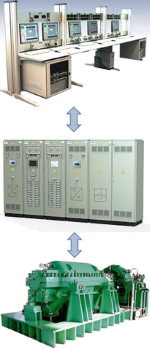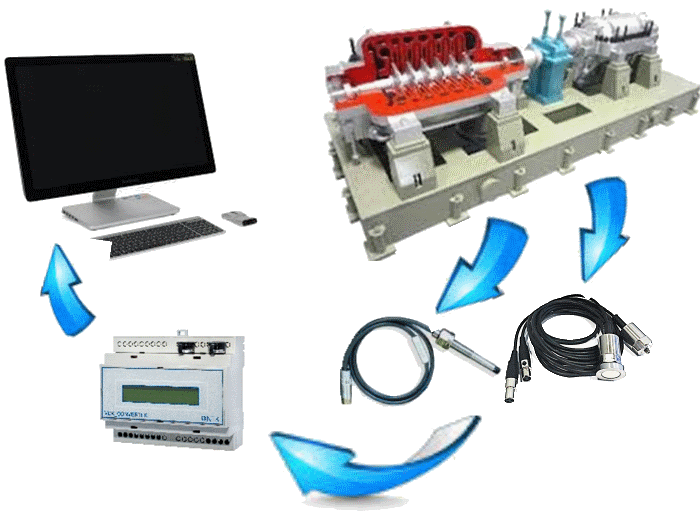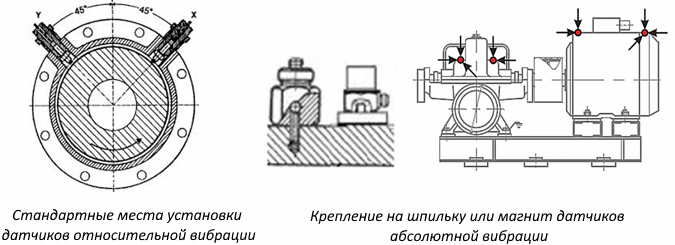Standard systems for automated control of units at all enterprises carry out automatic control and process control, support the set operating modes, provide emergency equipment protection. They significantly reduce time., equipment startup, reduce staff, necessary for maintenance and serve as a universal information database, in which all unit parameters are recorded.
The use of standard monitoring systems in modern operation of machines has not given the desired efficiency. Such systems only state a breakdown that has already occurred., without indicating its reason. This not only slows down the workflow and requires significant costs to restore the unit, and significantly increases the number of dangerous emergencies, in which service personnel may be injured.


VDS system allows you to carry out projects, tailored to individual customer requirements, considering all possible configurations and types of equipment. Carry out remote control of parameters, escort, maintenance and diagnosis of the state of the units using the GSM module.
The VDS system implements continuous monitoring and recording of all parameters (including the spectral composition of the vibration signal), formation of an archive of states and processes. VDS allows you to perform not only an assessment of the technical condition of machines, but also the diagnosis of defects at the nucleation stage, forecast for their further development, calculation of the residual resource of nodes and parts.
The system consists of primary converters (sensors), VDS module and top level (computer with software).
The introduction of a vibration monitoring system does not introduce any design changes.. The registration of the necessary characteristics is done by relative vibration sensors (contactless) at their standard installation locations. Execution by means of case accelerometers is also possible., with fastening them to a hairpin or magnet. Or both options at the same time.

Connecting sensors of the VDS monitoring system
Connects to VDS module 8 fast channels (acceleration sensors, revolutions, etc.) and no more 8 slow (temperature, etc.). One top-level computer can serve 8 VDS modules using RS485 communication interface.

Top level accept, handles, displays and archives information. It has convenient tools for studying and analyzing the obtained characteristics. (temporary waveforms, vibration spectra, rotor motion orbits, cascading graphics, amplitude-frequency characteristics, etc.)
The VDS module implements the recording of significant changes to the memory card offline (without top level), which provides highly informative data to investigate the causes of equipment failure in emergency situations at the unit.
Functions and opportunities
- continuous temperature measurement, pressure and vibration parameters in accordance with DIN ISO 10816;
- real-time calculation and construction of spectral components;
- visualization of trends of measured and calculated physical quantities (orbits, spectra, cascade, temporary);
- comparison of measured and calculated parameters with threshold values (warning and emergency settings);
- remote access to top-level archives;
- continuous monitoring of all parameters with subsequent recording to the module’s SD card;
- early fault diagnosis, assessment and prediction of the residual resource of nodes and parts;
- recording significant changes to the memory card offline (without top level).
Benefits the system:
- continuous monitoring of parameters
- fault diagnosis
- forecasting and estimation of residual life.
- autonomous operation of the VDS module (without top level)
- recording to the module's SD card (signals, trends, data)
- You can connect up to one top-level computer 64 vibration sensors and up 64 temperature sensors (8 modules for 16 channels).
- convenient and intuitive software interface
- measuring ranges according to DIN ISO 10816
- remote access to top-level archives
- optional WiFi
Decline operational expenses and losses from downtime equipment for score:
- reduce the likelihood of sudden failures
- actual maintenance
- early diagnosis and prediction of defect development
- estimates of residual resource nodes, parts and assemblies in general
- detailed analysis of accident records
- remote control parameters, escorts, maintenance and diagnostics of equipment status using GSM module

